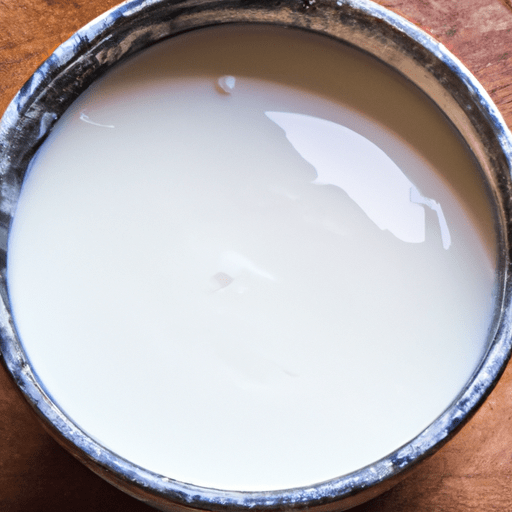Reduced Fat Buttermilk: A Healthier Twist on a Classic Ingredient
Are you looking for a lighter alternative to traditional buttermilk without compromising on flavor and versatility? Look no further than reduced fat buttermilk! This tangy and creamy ingredient is a fantastic addition to any kitchen, offering both culinary benefits and nutritional advantages. In this blog post, we’ll dive into the delightful world of reduced fat buttermilk, exploring its taste, common uses, nutritional value, and even uncovering a few interesting facts along the way.
Taste and Texture: Creamy Tanginess
Reduced fat buttermilk, often called “low-fat buttermilk,” shares the same fundamental characteristics as traditional buttermilk but with a lower fat content. It boasts a creamy and slightly tangy flavor profile, similar to yogurt or sour cream. This delightful taste makes it a versatile ingredient that can complement both savory and sweet dishes, adding a pleasant tang and creaminess.
Cooking with Reduced Fat Buttermilk: Endless Possibilities
Reduced fat buttermilk can be a wonderful addition to your culinary repertoire. It offers a variety of uses in both cooking and baking, making it a valuable ingredient to have on hand in your kitchen.
1. Baking: Reduced fat buttermilk serves as an excellent substitute for oil or butter in baking recipes. It adds moisture, tenderness, and a subtle tang to muffins, cakes, pancakes, and even breads. You’ll be amazed at how it enhances the texture and flavor of your favorite baked goods.
2. Marinades and Dressings: This versatile ingredient can be used as a base for flavorful marinades and dressings. Its tanginess adds a refreshing zing to salads, coleslaws, and marinades for meats, turning the simplest dishes into taste sensations.
3. Creamy Dips and Sauces: Reduced fat buttermilk can elevate your dips and sauces to a whole new level. Whether you’re whipping up a creamy ranch dip, a tangy tzatziki sauce, or even a delectable buttermilk-based salad dressing, it lends a smooth and velvety texture that will leave your taste buds wanting more.
Nutritional Value: A Healthier Option
Reduced fat buttermilk offers several nutritional advantages that make it an appealing choice for health-conscious individuals. Compared to traditional buttermilk, it contains lower levels of fat and calories while still providing a good amount of essential nutrients. Here’s a glimpse at its nutritional profile:
- Protein: Reduced fat buttermilk is a good source of high-quality protein, essential for muscle growth and repair.
- Calcium: It packs a punch when it comes to calcium, promoting healthy bones and teeth.
- Vitamins: It contains essential vitamins such as vitamin D, vitamin B12, and riboflavin, which contribute to overall health and well-being.
Interesting Facts: Learn and Impress
Origin and History: Buttermilk has been a beloved ingredient for centuries, with its origins traced back to ancient times. Traditional buttermilk was the leftover liquid from churning butter. Today, reduced fat buttermilk is made by fermenting skim milk with lactic acid bacteria, giving it its distinctive taste and texture.
Culinary Curiosity: Apart from its culinary uses, buttermilk has also been included in cosmetic products for generations due to its natural lactic acid content. It’s believed to have beneficial effects on the skin, helping to exfoliate and moisturize.
Healthy Bacteria: Reduced fat buttermilk contains probiotics, the “good” bacteria that support a healthy gut microbiome. These probiotics may contribute to improved digestion and overall gut health.
Bring Reduced Fat Buttermilk to Your Kitchen Today!
Now that you’ve discovered the delightful world of reduced fat buttermilk, it’s time to add this versatile ingredient to your kitchen arsenal. Its creamy tanginess, endless culinary possibilities, nutritional benefits, and intriguing history make it a truly remarkable addition to your cooking and baking endeavors. So why wait? Embrace reduced fat buttermilk and explore the wonders it can bring to your culinary creations!
Note: Reduced fat buttermilk can be found in most grocery stores, usually in the refrigerated dairy section. If unavailable, you can make your own version by adding one tablespoon of lemon juice or vinegar to a cup of low-fat milk and letting it sit for a few minutes.
Happy cooking and enjoy the magic of reduced fat buttermilk!
Reduced Fat Buttermilk
Origin: Buttermilk is a dairy product traditionally made by churning cream or fermented milk until butter separates, leaving behind a liquid called buttermilk. Reduced fat buttermilk is made by separating the cream from milk, resulting in a lower fat content compared to traditional buttermilk.
Common Uses: Reduced fat buttermilk is commonly used in baking as a moistening agent, and its acidity helps activate leavening agents like baking soda. It is also added to marinades to tenderize meat or used as a base for salad dressings and creamy soups.
Nutritional Benefits: Reduced fat buttermilk is a good source of protein, calcium, and phosphorus. It also contains vitamin B12, riboflavin (vitamin B2), and potassium. However, the actual nutritional content can vary depending on the brand and production methods.
Unique Properties: Buttermilk has a thick, creamy texture with a tangy flavor due to its high lactic acid content. It imparts a moist and tender texture to baked goods, making them soft and light. Due to its acidity, it is commonly used in recipes that call for baking soda, as the acid reacts with the leavening agent to create carbon dioxide and help the baked goods rise.
Historical Significance: Buttermilk has a long history and has been consumed for centuries. Historically, it was the byproduct of butter making, enjoyed by many cultures around the world. While traditionally made buttermilk could be high in fat, reduced fat buttermilk became popular as a healthier alternative to whole milk or cream in the mid-20th century, particularly in the United States.
Please note that reduced fat buttermilk can vary in terms of fat content based on different brands and production methods. It is essential to check the product label for accurate nutritional information.




Use the share button below if you liked it.
It makes me smile, when I see it.